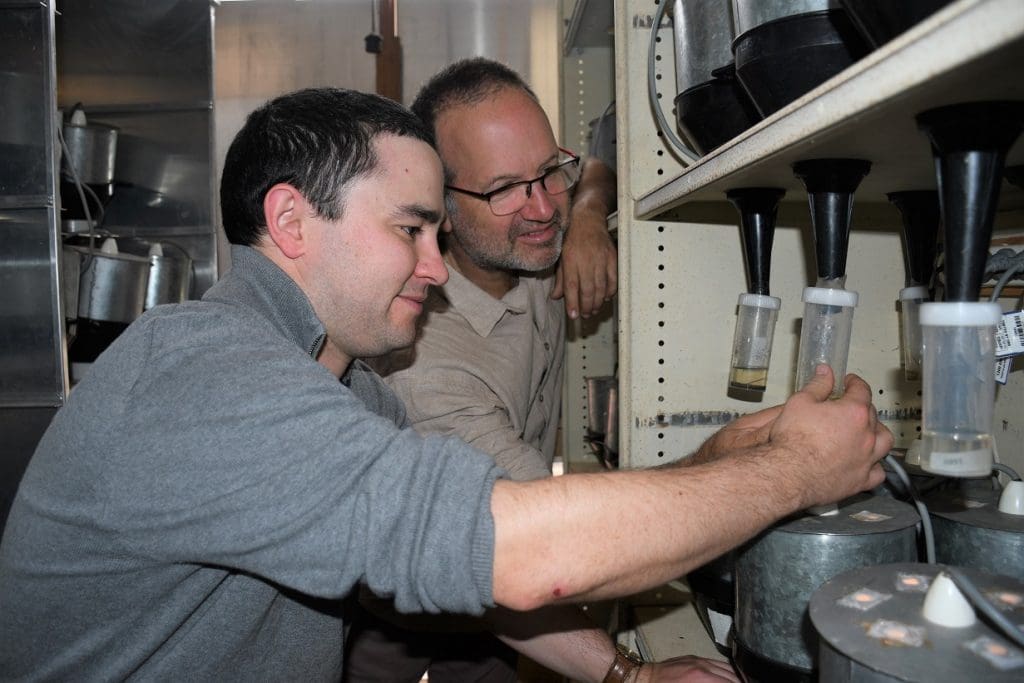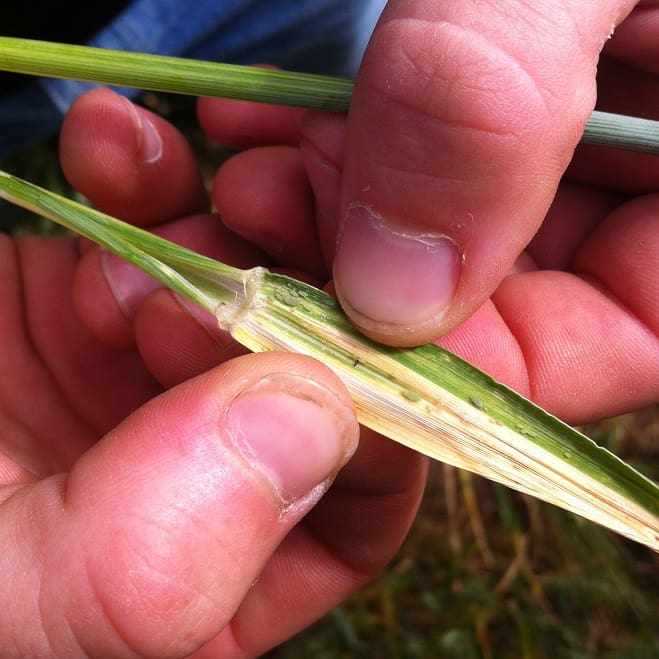THE more Australian researchers learn about Russian wheat aphid (RWA), the more confident they are that the pest does not pose a major threat to winter cereal crops in this country if growers and advisers understand how to manage it effectively.
Scientists have been studying RWA under southern Australian conditions and within local farming systems since it was first detected in 2016.
Through research investments by the Grains Research and Development Corporation (GRDC), a biological and ecological profile of the pest is being built to provide Australian grain growers with scientifically robust management tactics for the future.
RWA is now present in many grain cropping areas of South Australia, Victoria, Tasmania and New South Wales. Despite the ongoing dry conditions in northern NSW, surveys as recent as November 2019 have detected RWA as far east as Tamworth.
The aphid has not been detected in Western Australia, the Northern Territory or Queensland.
The GRDC investment, ‘Russian wheat aphid risk assessment and regional thresholds’, was established to investigate regional risk and management options for RWA.
The collaborative investment is being led by the South Australian Research and Development Institute (SARDI), the research division of Primary Industries and Regions SA (PIRSA), in partnership with sustainable agriculture research organisation cesar.
The regional thresholds aspect of this research has involved capture of data from a series of trials across south eastern Australia, which are operated by a number of farming systems groups.
SARDI entomologist, Maarten ven Helden, said the data on infestation levels, symptoms and associated yield would help to determine the regional production risk posed by RWA and the economic thresholds that would guide growers in effective management of RWA, taking into account infestation date, crop type and regional climatic conditions.
“Currently, Australian intervention threshold recommendations are based on overseas research which recommends a spray application when more than 20 per cent of all seedlings are infested up to growth stage 30 and more than 10 per cent of tillers are infested from growth stage 30,” Dr van Helden says.

PIRSA SARDI researchers Thomas Heddle and Maarten van Helden using Berlese funnels to extract Russian wheat aphids from grass samples, to assess where the aphids over-summer. Photo: GRDC
The Australian trials so far have shown that a considerable amount of RWA population pressure is required before yield loss is incurred.
In one of the untreated trial plots at Loxton in SA, almost 30 per cent of tillers were infested with aphids, enabling yield loss data to be recorded.
According to Dr van Helden, the impact of that infestation was surprising.
“Despite this heavy aphid attack, the plants were still able to grow and produce normally,” he said.
“Overall, yield loss in our trials has not been as high as expected when aphid numbers have largely been above the overseas threshold. It seems that the overseas thresholds are, at this stage, acceptable for affected Australian grain growing regions.
“Plants under drought stress are more vulnerable to aphid infestation and we have recorded yield loss in such situations.
“However, with the results we are getting from these trials, we can now be quite confident in saying that in many situations there is minimal risk of Russian wheat aphid building up to damaging populations under Australian climatic conditions.”
The GRDC investment is also investigating how RWA survives over summer. This knowledge is considered pivotal in determining the risk of infestation for winter sown cereals and potential damage ahead of each new cropping season, as well as aiding RWA management planning and development of cultural controls.
The current research effort builds on previous GRDC investments conducted by SARDI and cesar, which focused on seasonal factors influencing RWA population growth, biotype confirmation, varietal susceptibility, damage and yield loss, and chemical efficacy.
Pest Bites video on identification of RWA
Source: GRDC
Further information:
RWA Tips & Tactics guide: https://grdc.com.au/TT-RWA
Russian Wheat Aphid: Tactics for Future Control publication: https://grdc.com.au/rwa-tacticsfuturecontrol
I SPY, a comprehensive crop insect identification manual: https://grdc.com.au/I-SPY
RWA resource portal: http://bit.ly/2Px67tu
G.




HAVE YOUR SAY